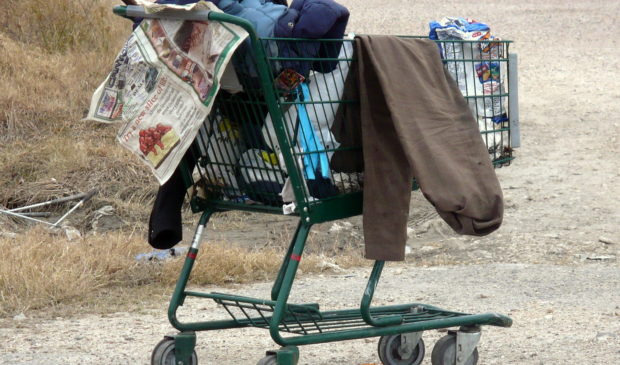
Despite the city’s work to move those living in homeless encampments into permanent housing, nearly half of all temporary shelter inhabitants exit the system and return to homelessness. One hundred and two people – 48 percent of those moved into shelter – in the Housing-Focused Encampment Assistance Link, or HEAL program, have left the program with no housing available to them compared to 94 shelter residents advancing into stable housing.
At last week’s meeting of City Council’s Public Health Committee, a pair of updates showed the current state of the city’s homelessness strategies and gave a look at the housing challenges ahead for housing-insecure senior citizens.
Dianna Grey, the city’s homeless strategy officer, reviewed data for HEAL’s effectiveness since its inception last year and for the current fiscal year. Since HEAL’s start, 361 people from 10 encampments have been moved into shelter, with wait times for housing falling to just over three months in 2022 compared to more than six months when the program began.
Council Member Ann Kitchen was among the committee members who questioned the high number of shelter residents either choosing to leave or being removed before stable housing is available. “I’d like to understand if there have been any opportunities to talk to those who are exiting to understand the reasons behind their exit, or is it the case that they just leave?”
Grey said the structure required to live in the shelter environment may be uncomfortable to those who have lived without any kind of stability for long periods of time, raising discipline issues or a general desire to leave.
“Some people just leave, but more commonly it’s difficult to adjust to a more structured environment,” she said. “There are rules there and there is a curfew where people have to be in by a certain time in the evening … occasionally we will have issues arise where there is an interaction with staff or another shelter guest that is such that management makes a decision to exit someone.”
Council Member Natasha Harper-Madison said she’d like the city to be more aggressive with its approach to providing needed services to those who lack the life skills needed to live in a home and operate in a financially and legally upright manner.
“I have a lot of folks in my district, constituents that aren’t experiencing homelessness yet but we all know it’s a matter of time, and our staff is trying to connect them to resources,” she said. “Sometimes the challenge to true success and permanence in housing has so much to do with human behavior, and I wonder if there’s another way for us to collect data about efficacy of programs and not being able to quantify some of the challenges.”
Later in the meeting Amy Temperley, CEO of the nonprofit group Aging Is Cool, discussed the findings of a recent study funded by St. David’s Foundation that looked at specific data related to those over 50 experiencing homelessness. The study included front-line workers as well as homeless individuals, and found that each month 66 seniors are identified in the local Homeless Management Information System.
Among other findings, 70 percent of the local elderly homeless population are men, and homeless seniors have significantly higher rates of disabilities, HIV and AIDS, alcohol abuse, chronic health conditions and mental health issues.
Eighty-three percent of survey respondents said obstacles such as difficulty completing paperwork or finding age-appropriate housing options contributed to their homelessness.
Temperley’s group and others involved in homelessness issues are in the very beginning stages of creating a strategy for addressing homelessness among the elderly.
Kitchen said the city can target that population to greatly reduce housing issues, much the way it did in recent years for children and veterans.
“I stand ready to help you all, both through the commission on seniors and through ECHO, to take some next steps. It occurs to me that this is a manageable population in terms of the numbers,” she said. “I’d be inclined to create a greater focus on older adults.”
Photo made available through a Creative Commons license.
The Austin Monitor’s work is made possible by donations from the community. Though our reporting covers donors from time to time, we are careful to keep business and editorial efforts separate while maintaining transparency. A complete list of donors is available here, and our code of ethics is explained here.
Join Your Friends and Neighbors
We're a nonprofit news organization, and we put our service to you above all else. That will never change. But public-service journalism requires community support from readers like you. Will you join your friends and neighbors to support our work and mission?
"Exit" - Google News
September 12, 2022 at 12:06PM
https://ift.tt/eyH13iP
Nearly half of homeless residents exit HEAL program without housing - Austin Monitor
"Exit" - Google News
https://ift.tt/CO7AFdh
https://ift.tt/mVjg40U
Bagikan Berita Ini














0 Response to "Nearly half of homeless residents exit HEAL program without housing - Austin Monitor"
Post a Comment